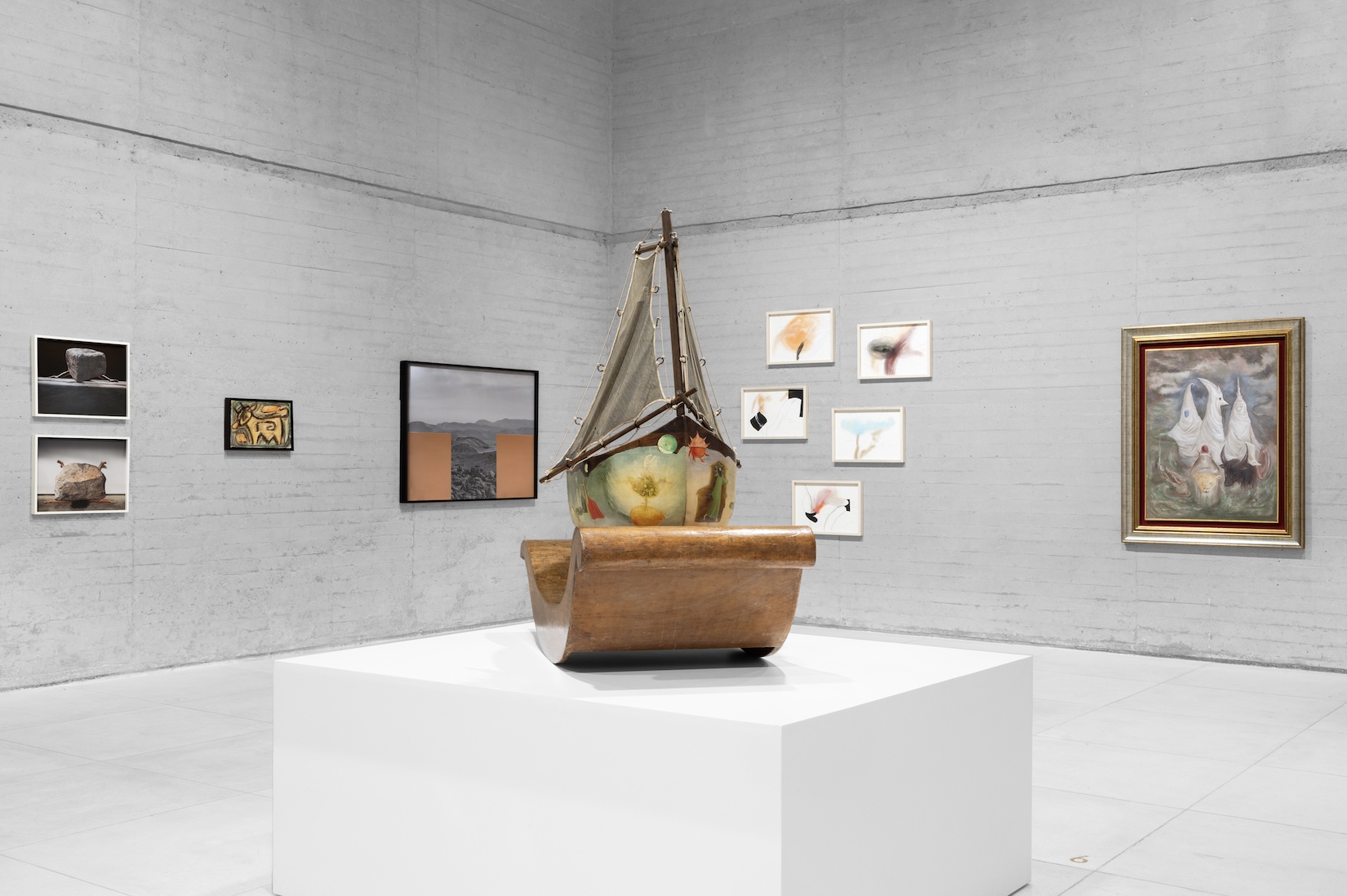
Playing with closed eyes, 100 years of surrealism
Exhibition
-> Feb 6 2024 – Apr 6 2024
RGR Gallery presents the group exhibition Playing with your eyes closed, 100 years of surrealism that includes the work of: Karina Aguilera Skvirsky, Mercedes Azpilicueta, Guillermina Baigorri, Juan Batlle Planas, El Techo de la Ballena (Daniel González), Leonora Carrington, Marcelo Cidade, Magdalena Fernández, Vicente Forte, Hilma’s Ghost, Gunther Gerzso, Elsa Gramcko, Oliverio Girondo, Patrick Hamilton, Kati Horna, José Horna, Magali Lara, Francisco Muñoz, Jose Manuel Moraña, José Planas Casas, Diego Pérez, Alice Rahon, Xul Solar, Remedios Varo, Oswaldo Vigas.
The centenary of surrealism invites us to review through a non-historicist approach, the very definition of reality that in 1924 required an expanded or problematized notion of its confines due to the role that technology played in life, war, and the collective aspirations for change that proposed the search for a new political spectrum. Members of the surrealist founding group, some of whom were refugees in Mexico as well as in the Southern Cone, sought to renew the ruins of culture after the political and economic catastrophe caused by the Great European War and the terrible demographic consequences left by the Spanish flu, as well as the appearance of fascism. These conditions seem to resonate like alarms in the present. Recovering the exquisite corpse as a toolbox for playful creation and surreal invention is particularly productive when thinking of the contemporary debate on Artificial Intelligence (AI). Today, artificial intelligence shows transmuted realities and creates an imaginary that exacerbates the idea of the world, as imagined by surrealism, altering processes, and changing perception and the human experience.
This group exhibition, in addition to recovering the old surrealist practice of the exquisite corpse, views archives as a disease without aspiration for a cure and art as a space for dreaming, waking, and acting. Likewise, it arouses questions in a non-literal way about the conjunction between neural networks, computer games, and linguistic models present in AI to acquire a productive dimension when contrasting them with the aspiration to create a new reality unfolded by the need to explore the matter of dreams and the human psyche. Do machines play just like humans? Can they feel or dream like they do in science fiction? Or in the words of ChatGPT artificial intelligence creator Sam Altman, are [these machines] a tool or a creature?
Curated by Gabriela Rangel and guest curator Verónica Rossi.
Gabriela Rangel is an independent curator, writer based in Brooklyn, New York. From 2019 to 2021 she was artistic director of the Museo de Arte Latinoamericano de Buenos Aires (MALBA). Prior to that she was visual arts director and chief curator at Americas Society from 2004 to 2019. She holds an MA in curatorial studies from the Center for Curatorial Studies, Bard College, an MA in media and communications studies from the Universidad Católica Andrés Bello, Caracas, and film studies from the International Film School at San Antonio de los Baños, Cuba. She has worked at the Fundación Cinemateca Nacional and the Museo Alejandro Otero in Caracas, and the Museum of Fine Arts, Houston.
Rangel have curated and co-curated numerous exhibitions on modern and contemporary art as well as monographic shows of Elsa Gramcko, Erick Meyenberg, Sylvia Gruner, Carlos Cruz-Diez, Marta Minujín, Gordon Matta- Clark, Gego, Arturo Herrera, José Leonilson, and Xul Solar. She has written for Hyperallergic, Letras Libres, Revista Ñ, Art in America, Parkett, The Brooklyn Rail, and Art Nexus, edited numerous books, and contributed texts to such publications as Emily Mae Smith (Petzel Gallery, New York); Pedro Reyes: Sociatry (Museum Marta Hertford, Hertford, Germany, 2022); Rosangela Renno (Pinacoteca de SP, 2021); Erick Meyenberg: D Major Isn’t Blue (Museo Amparo, 2020); Lydia Cabrera: Between the Sum and the Parts (Americas Society/Koenig Books, London, 2019); Contesting Modernity: Informalism in Venezuela 1955–1975 (Museum of Fine Arts, Houston, 2018); Marta Minujín, Minocodes (Americas Society, 2016); and A Principality of Its Own (Americas Society/Harvard University Press, 2006).
Verónica Rossi is a historian, archivist and curator of the MALBA museum.
In 2022 she curated the exhibitions Ana Teresa Barboza. Tejer las piedras (MALBA) and Alita Olivari. Naif brutal (Museo Marc). She recently participated as co-curator of the exhibitions Del cielo a casa. Cultura material argentina (MALBA, 2023), Terapia (MALBA, 2021) and Al Sur del sur (MALBA, 2020). She also worked alongside the artist Mercedes Azpilicueta on several projects: Erauso. The Inner Experience en (Gassworks, Londres, 2021) y Positions 5 (Van Abbe Museum, 2019). She created the archive of writer Rodolfo Enrique Fogwill, contributing to the publication of unpublished texts, and the artist Adrián Villar Rojas, among others.
— RGR Gallery